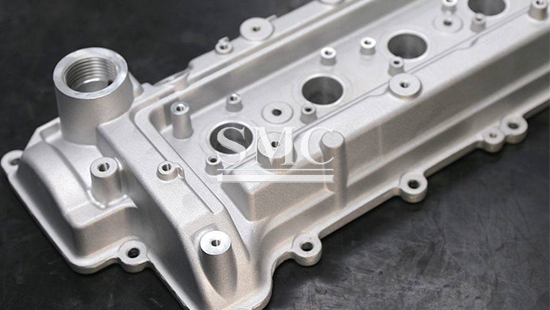The design of die-casting parts must take into account the wall thickness of the die-casting parts, the fillet and demolding angle of the die-casting parts, the reinforcement ribs, the minimum distance between the holes and the holes on the die-casting parts, and the rectangular holes and grooves on the die-casting parts. There are seven aspects of machining allowance for inserts and die-casting parts.
Design specification for casting fillet
Generally, all parts of the die casting should have rounded corners (except at the parting surface) to make the metal flow smoothly when filling, and the gas is easier to discharge, and it can avoid cracks due to acute angles. For die castings that need to be electroplated and painted, the rounded corners can be evenly plated to prevent paint buildup at sharp corners. The fillet radius R of die castings is generally not less than 1mm, and the minimum fillet radius is 0.5 mm.
Design specification for inserts in die castings
First, the number of inserts on the die-casting part should not be too much; secondly, the connection between the insert and the die-casting part must be firm, and at the same time it is required to slot, bulge, knurl, etc. on the insert; again, the insert must avoid sharp corners , In order to facilitate the placement and prevent the stress concentration of the casting. If there is serious electrochemical corrosion between the casting and the insert, the surface of the insert needs to be protected by plating; finally, the casting with the insert should avoid heat treatment to avoid the phase of the two metals. The change causes volume change and loosens the insert.

Design specification for wall thickness of die casting
Thin-walled die castings have higher strength and better compactness than thick-walled die castings. In view of this, the design of die castings should follow this principle: the wall thickness should be reduced as much as possible on the premise of ensuring that the casting has sufficient strength and rigidity. And keep the wall thickness uniform. Practice has proved that the wall thickness design of die-casting parts is generally 2.5-4mm, and parts with a wall thickness of more than 6mm should not be produced by die-casting technology. The performance of the impact of too thick and thin walls of die castings on the quality of castings: If the walls of the castings are too thin in the design, the metal will not be welded well, which directly affects the strength of the castings, and will also cause difficulties in forming; the walls are too thick or severely uneven On the other hand, as the wall thickness increases, defects such as pores and shrinkage porosity inside the casting also increase, which will also reduce the strength of the casting and affect the quality of the casting.
Design specification for die casting machining allowance
Under normal circumstances, due to the limitations of the die-casting process, when certain dimensional accuracy, surface roughness, or form and position tolerances of the die-casting parts cannot meet the requirements of the product drawings, the company should first consider the use of such as correction, polishing, extrusion, Reshaping and other finishing methods are used to repair. When finishing cannot completely solve these problems, some parts of the die casting should be mechanically processed. It should be noted here that when performing mechanical processing, you should consider choosing more Small machining allowance, and try to use the surface that is not affected by the parting surface and movable forming as the rough reference surface, so as not to affect the machining accuracy.
Design specification for draft of die casting
When designing die castings, there should be a structural slope in the structure. When there is no structural slope, there must be a process slope for demoulding where necessary. The direction of the slope must be consistent with the demolding direction of the casting.
Guest contributors are welcome at the Alloy Wiki.It is a weekly wiki and guide on alloy information and processing technology, while also about the vast array of opportunities that are present in manufacturing. Our team of writers consists of a Machining Material Supplier / Machinist / Tool and Die Maker, a Biomedical Engineer / Product Development Engineer, a Job Development Coordinator / Adjunct Professor, and a President and CEO of a manufacturing facility.
Link to this article:Design Specifications for Die Castings
Reprint Statement: If there are no special instructions, all articles on this site are original. Please indicate the source for reprinting:Alloy Wiki,thanks!^^


